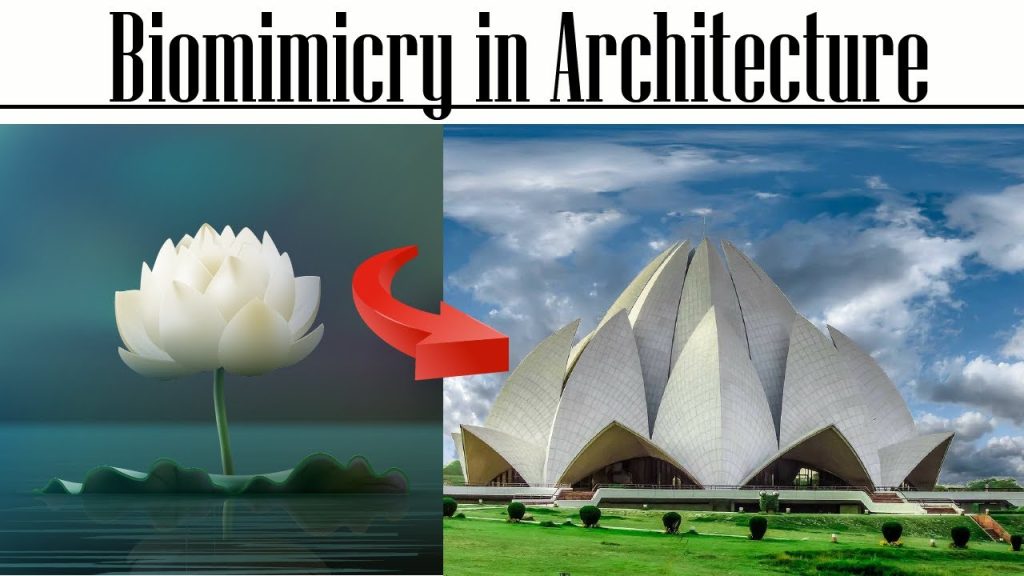10 Stunning examples of Biomimicry in Architecture

Nature has long been associated with architecture, and it has served as a source of inspiration for many years. It has also served as a catalyst for the development of various design ideas and movements. Biomimicry is one such concept that has influenced and contributed to the built environment in the shape of buildings, principles, and forms. Biomimicry is a strategy of addressing human problems by studying and replicating natural methods. Nature is seen as a yardstick, a mentor, and a role model. In architecture, biomimicry is frequently utilised to find sustainable solutions by studying the principles that control the form rather than reproducing the form itself. It covers a wide range of topics in architecture and engineering, including materials, structural systems, design, and much more. The mimicry may be observed on three levels: the organism’s behaviour, the organism’s behaviour, and the ecosystem’s behaviour.
The following is a list of ten instances of biomimicry in architecture.
1. Beijing National Stadium, Beijing | Architecture Inspired by Biomimicry
The Beijing National Stadium, often known as the Bird’s Nest, was built for the 2008 Olympics by Swiss architects Herzog & de Meuron. The building rises from its surroundings like an inverted nest, as the name indicates. The stadium is made up of two structures: a concrete seating bowl and an exterior steel frame that symbolises the stadium’s twigs. The façade is filled with ETFE (Ethyl tetrafluoroethylene) panels to shield spectators, offer acoustic insulation, minimise the dead weight on the roof, and maximise the entrance of sunshine, similar to how a nest is insulated by stuffing material between the twigs.
2. Beijing’s National Aquatics Center | Biomimicry in Action
Another remarkable structure built to accommodate the 2008 Olympics was the National Aquatic Center, popularly known as a water cube. Cells and the spontaneous development of soap bubbles served as inspiration for the design. The bubbles’ unusual shape was repeatedly exploited to create a structure that seemed organic and unpredictable. Because of its low weight and excellent insulation, ETFE (Ethyl tetrafluoroethylene) was used to produce the structure’s continuous skin. When compared to glass, the coating allows more light in and even captures 20% of solar energy, which is utilized to heat the pools.
3. Melbourne’s Council House 2 | Biomimicry Examples
A termite mound’s techniques were used to develop the office building. Natural convection, thermal mass, water cooling, and ventilation stacks were employed to imitate the technique used by termites to control and maintain the temperature in the mound. The structure’s façade is inspired by the skin system, namely the epidermis (outer skin) and dermis (inner skin) (inner skin). The dermis serves as an outside zone, including stairwells, ducts, lifts, and other equipment, while the inner line defines the fire compartment. The structure’s bark façade also helps with natural ventilation of the wet systems.
4. Milwaukee Art Museum, Wisconsin | Biomimicry Examples
The Quadracci Pavilion, designed by Santiago Calatrava, is the museum’s most dynamic feature. The Burke Brise Soleil is a moveable sunscreen that, thanks to its opening and closing mechanism, resembles the wings of a bird.
5. London’s Gherkin | Biomimicry in Architecture
The form and lattice structure of the Venus Flower Basket Sponge are mirrored in Norman Foster’s renowned building, the 30 St Mary Axe, often known as the Gherkin. The sponge’s lattice exoskeleton and form give it strength and stability. The skeleton’s hollow basket filters the water for nutrients as well. Because of the building’s form, the structural parts are linked at various angles on each story. The open floor layout, vertical support without internal columns, wind resistance, and ventilation throughout all floors are all possible with this approach.
6. Zimbabwe’s Eastgate Center
The centre, designed by Mick Pearce in partnership with Arup engineers, is a sophisticated shopping mall and office structure that uses natural cooling. The air enters the structure at the lower floors and exits through the chimneys, inspired by termites’ natural cooling system. When compared to a normal building, the natural system helps cut energy usage by 10%.
7. Singapore’s Esplanade Theatre | Biomimicry Examples
The theatre, built by DP Architects and Michael Wilford, features a sophisticated skin system inspired by the hard thorn shell of the Durian fruit that protects its seed. The curving framework and triangular aluminium louvres on the structure’s façade have a responsive shading system that changes to the sun’s angle and location throughout the day. The system delivers both natural light and a dramatic shadow effect in the room.
8. Eden Project, England | Biomimicry in Action
The Eden Project is the biggest greenhouse in the world. Soap bubbles influenced the design of the massive semi-circular modules. After researching pollen grains, radiolaria, and carbon molecules, an effective structural system comprised of hexagons and pentagons was discovered. ETFE (Ethyl tetrafluoroethylene) and steel were used to construct the biomes. The geodesics self-clean and function as a thermal blanket, trapping air between them and lowering energy use.
9. Institute du Monde Arabe, Paris | Biomimicry Examples
The structure’s adaptable façade is designed to seem like an eye’s iris. The structure’s exterior functions as an automated eye that dilates and closes in response to changing circumstances throughout the day, while the dynamic façade on the south preserves thermal exposure. This helps to regulate the amount of light that enters interior rooms while also maintaining thermal comfort.
10. Biomimicry in Architecture | Eiffel Tower, Paris
The femur, or thigh bone, draws influence from the iron framework. The trabecula within the femur is represented by the internal iron bracing, while the outward flares at the base of the tower symbolize the curved part at the top of the bone. The structure’s characteristics, which are comparable to those of a bone, enable it endure shear winds and give structural stability.







